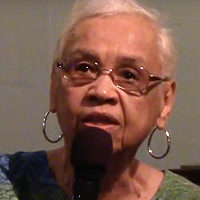It’s hard to be a child, but harder if you grow up in the United States, according to a recent United Nations report.
Despite claims by “free market” braggarts that unfettered capitalism is the pinnacle of human achievement, children’s quality of life in the U.S. and Britain ranked at the bottom of the 21 wealthiest countries, according to the UNICEF survey.
Jonathan Bradshaw, one of the study’s researchers, said the low ranking of the U.S. and Britain, in spite of their high levels of national wealth, was due to their greater wealth gap and poor levels of support for families. Bradshaw, a professor at the University of York in Britain, cited poor health coverage for children as an example.
The U.S. ranked 21st in the health and safety category because of its higher infant mortality, lower immunization rates, higher numbers of deaths from accidents and injuries before age 19, and more children reporting fighting in the past year or being bullied in the previous two months.
The research covered six areas: material well-being, health and safety, education, family and peer relationships, behaviors and risks, and young people’s own sense of well-being. The U.S. and Britain were at the bottom in five of six categories. The Netherlands, Sweden, Denmark and Finland were at the top.
The survey covered topics like time spent talking with parents and sitting down for dinner together. Youth in the U.S. and UK spend less time in these activities than their peers in the other 19 countries.
Regarding risky behavior surveyed in the U.S., fewer 15-year-olds smoke cigarettes, but more of them smoke marijuana regularly. More 11-to-15-year-olds have poor diets and are overweight and inactive than in other countries. A greater percentage of 15-year-olds are sexually active, have unprotected sex and become parents. More American children reported having experienced violence than those in other countries.
Sweden, Poland, the Netherlands and Ireland ranked at the top with children and youth having the least negative and risky behaviors.
But it was the category of material well-being, where the U.S. ranked next to the bottom, that was the most contentious. Wade Horn, assistant secretary of the U.S. Department of Health and Human Services, said the study’s standard of measuring poverty is higher than that used in the U.S. and therefore the results are “meaningless.” The survey put the poverty threshold at $35,000 a year for a family of four. The U.S. government defines poverty as an income of $20,650 for a four-person family.
But other reports point to similar troubling poverty trends. According to a recent analysis of 2005 census figures by McClatchy Newspapers, “severe poverty” in the U.S. has grown to a 32-year high, reaching 16 million Americans. “Severe poverty” was defined by a family of four with an annual income of less than $9,903. The severe poverty rate grew 26 percent from 2000 to 2005 — 56 percent faster than the overall poverty population grew.
The gulf between the nation’s “haves” and “have nots” continues to widen, McClatchy Newspapers reported.
Nancy Cauthen, deputy director of the National Center for Children in Poverty, said that for a family of four to afford necessities like housing, food, child care and health care it takes an income of $41,300 — or twice the poverty line.
“When you look at countries that are doing a better job, they are providing support for families, regardless of income. They provide child allowances, child care and universal health care,” she said.
The House Ways and Means Committee, chaired by Rep. Charles Rangel (D-N.Y.), held hearings in January on the economic impacts of child poverty. When combined with racist discrimination towards Black, Latino and Native American communities, the problems are intensified, according to experts.
Rangel said the testimony “suggests that children growing up in poverty ultimately cost the economy $500 billion a year because they are less productive, earn less money, commit more crimes and have more health-related expenses.”










